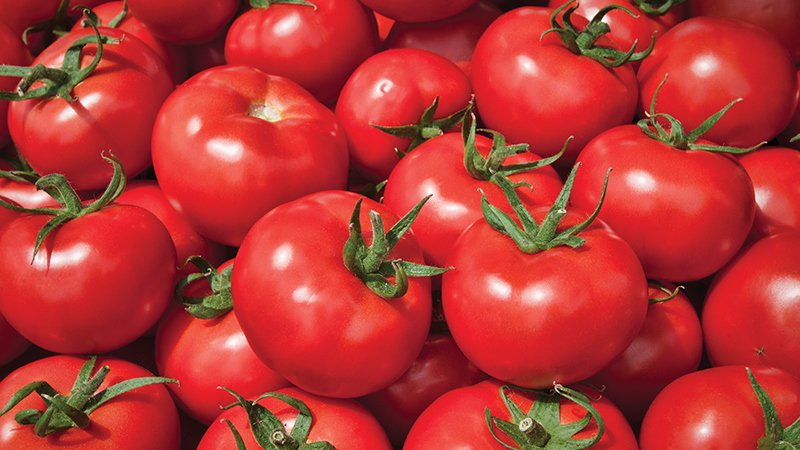Lessons Learned From 2008 Food Safety Scare
The food safety scare in the summer of 2008 still leaves a sting for Florida tomato growers. With the more recent Salmonella outbreak in peanut butter, food safety is no less in the news these days. During the 2008 Florida Ag Expo, Joanne Brown, deputy commissioner for the Florida Department of Agriculture and Consumers Services (FDACS), and Dr. Martha Roberts, with the Institute of Food and Agricultural Sciences (IFAS), addressed how the 2008 outbreak was mishandled and lessons that must be learned from it. The food scare made for a long, hot summer.
According to Brown, in late May, officials in New Mexico and Texas linked numerous illnesses there with eating raw tomatoes in the week prior to the people getting sick. No other food items examined were associated with the illness.
In June, the FDA advised consumers in New Mexico and Texas not to eat certain types of raw tomatoes, which included rounds, Romas, and red plums.
Two days later, the FDA released a list of states from which it was safe to purchase tomatoes. Florida was not on it. The following day, FDA expanded the advisory warning to consumers in all states to avoid the listed tomatoes. FDACS was informed by FDA that Mexican and Florida tomatoes were involved in their investigation being conducted to determine the source of the Salmonella. Florida and Mexico supplied nearly all of the tomatoes available in the U.S. during the beginning of the outbreak. Over the next four days FDACS, the Florida tomato industry, and FDA worked out a plan to return to the marketplace Florida tomatoes that were not in production at the time of the outbreak. Nineteen tomato-producing counties were added to the FDA’s “safe tomato” list, and all shipments from those counties would be accompanied by a certificate issued from FDACS.
FDA officials visited numerous locations in Florida during the investigation and tested a large number of environmental and tomato samples. However, they were unable to find any Salmonella that included the saintpaul strain that was the cause of the illnesses.
One month after the nationwide advisory on tomato consumption, investigators linked several restaurants to groups of people who had gotten sick with the same strain of Salmonella. Based on what they had consumed, jalapeño and serrano peppers were implicated in the outbreak. On July 9, FDA issued a warning on consumption of raw jalapeño peppers, and on July 17, it lifted the advisory on tomatoes.
Eventually, FDA tracked the source of the jalapeño peppers to a distributor in Texas and production in Mexico. They isolated the outbreak strain of Salmonella saintpaul from a jalapeño pepper in the warehouse in Texas and from environmental samples at farms in Mexico. On Aug 29, the Centers for Disease Control and Prevention (CDC) declared the outbreak was over. The last official case count was 1,463 cases from 43 states, the District of Columbia, and Canada.
The Florida tomato industry was hit hard by being labeled the source of the outbreak and is now working to restore consumer confidence that was severely damaged by the Salmonella outbreak. The event cost tomato growers $150 million nationally.
Due Diligence
Dr. Martha Roberts noted that Florida growers had already exercised more “due diligence” than others when it comes to food safety by adopting tomato good agricultural practices (T-GAPs) for growers and tomato best management practices (T-BMPs) for post-harvest handlers. These are mandatory practices, and the law went into full effect in July of 2008. Much of the practices were being conducted by growers and handlers when the 2008 outbreak occurred.
Roberts posed the question that many in the tomato industry were asking after the outbreak: Why spend so much time and resources on these food safety practices, if this is going to happen anyway? She noted that Florida growers and packers went out of their way to cooperate with FDA and CDC officials during the outbreak investigation, but by starting with the presumption that tomatoes were the cause of the outbreak, investigators missed the true source and did massive damage to the industry.
Once the presumption is made that a produce item is the source of an outbreak, irrefutable evidence must be presented that it is not part of the outbreak. That is very difficult to do in a complex supply chain like tomatoes.
Lessons Learned
Roberts noted that the investigation process following an outbreak needs to be streamlined and made more transparent. She added the need for a mechanism to absolve or exonerate a product once associated with an outbreak if it is proven to be clean.
There is a need for better and more immediate communication with CDC, state health departments, and FDA to quickly address outbreaks. And, Roberts stressed the importance of investigators involving state industry personnel during times of crisis — something investigators didn’t fully do during the 2008 Salmonella investigation.
The importance of quick traceback is critical in bringing a food safety scare to a quick resolution. The new T-GAPs and T-BMPs provide for robust record keeping to ensure quicker traceback. However, traceback only works if investigators are tracing the right food, making epidemiology all the more important.
After the outbreak, all parties involved are studying where the investigation went wrong and how to better handle future outbreaks. Currently, there are multiple bills in front of Congress to help achieve much needed reform.









